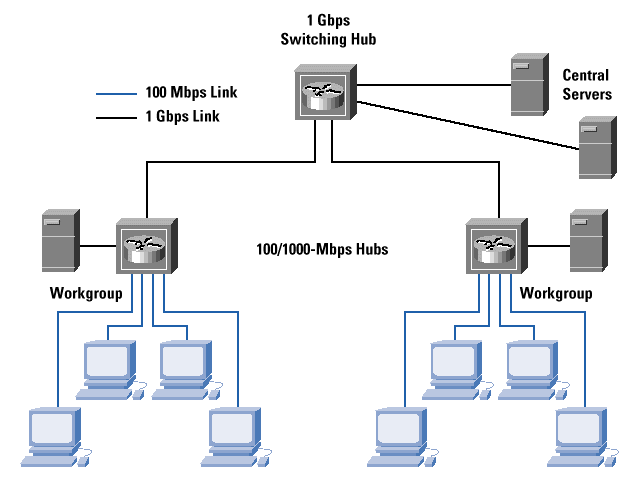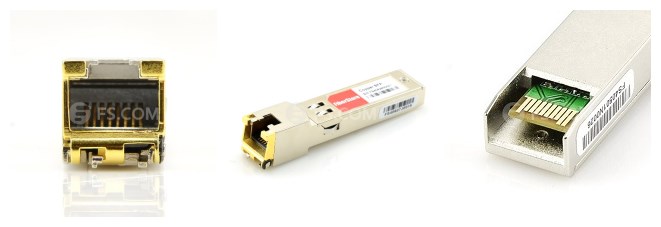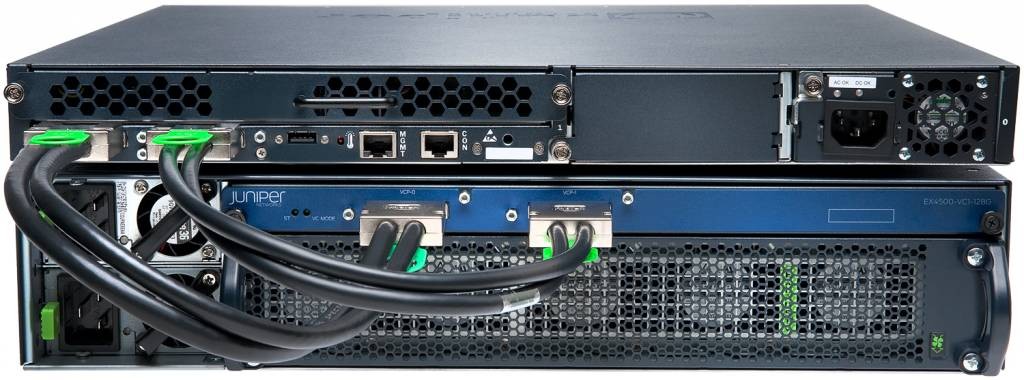Although 10 GbE (Gigabit Ethernet) to 40/100 GbE migration has been widely recognized as the Ethernet speed upgrading path, users still keep pursuing a better solution to replace the existing “10GbE-40GbE-100GbE” path. Companies like Google, Microsoft, Arista, and Mellanox are pushing the development of a 25 Gigabit Ethernet standard for top-of-tack server networking. Some may question the need for this technology, but they will soon see the benefits. New deployments, such as 10GbE—25GbE—100GbE or 10GbE—25GbE—50GbE—100GbE are announced to better serve the data center and cloud network. Thus, what is 25 GbE and why is it in demand?
25GbE (25 Gigabit Ethernet) is a proposed standard for Ethernet connectivity in a data center environment. An industry consortium (25G Ethernet Consortium) was formed in July 2014 to support the specification of single-lane 25Gb Ethernet technology, because the proposed 25 GbE standard will use the same physical silicon from a single 25 Gbit/s lane. This simplifies the process with just minor changes for forward error correction and lane alignment, and it reduces the cost when compared to 40 GbE.
As is known to all, in the high-density data center, using multiple 10 GbE would require twice as many Ethernet switches with their associated space, power, and cooling costs. Deploying 25GbE networks enables organizations to significantly decrease capital and operating expenses by reducing the required number of switches and cables to solve these issues, compared to 10GbE and 40GbE (4×10 GbE) technology. Additionally, fewer network components also reduce ongoing management and maintenance costs.
For instance, if we use the 10GbE—40GbE—100GbE path, we will have 10 GbE single, 40 GbE quads and 100 GbE ten lanes in production. But when we turn to 25 GbE, we just need 25 GbE single, 50 GbE dual and 100 GbE quads in production. Obviously, 25GbE enables us to have 2.5X the performance of 10Gb Ethernet, making it a cost-effective upgrade to the 10GbE infrastructure. While compared to 40GbE, which is actually four 10GbE lanes, 25GbE is delivered across a single lane which provides greater switch port density and network scalability. Moreover, using multiple 25GbE lanes, it is easy to upgrade of 50GbE and 100GbE networks. It is a cost-effective solution for datacenter upgrade and cloud-scale network expansion. This is why 25 GbE is favoured and highly recommended by those famous consortium.

The SFP28 (25G Small Form-Factor Pluggable) and QSFP28 (25G Quad Small Form-Factor Pluggable) transceivers and interconnect cables are high-density, high-speed product solution designed for 25GbE and 100GbE applications in the telecommunications, data center and cloud-scale networks. The emergence of these two form-factors pluggable certainly reflect the trend in the industry to aggressively bring 100GE density up and costs down.
Based on the SFP+ MSA form-factor, SFP28 assembly solution enables a new generation of high-density 25G Ethernet switches and NIC cards, facilitating server connectivity in data centers, and a conventional and cost-effective upgrade path for enterprises deploying 10G Ethernet links today in the ubiquitous SFP+ form factor.
QSFP28 transceiver, as a new type of 100G transceivers, offers four channels of high-speed differential signals with data rates ranging from 25 Gbps up to potentially 40 Gbps, and will meet 100 Gbps Ethernet (4×25 Gbps) and 100 Gbps 4X InfiniBand Enhanced Data Rate (EDR) requirements. According to IEEE 802.3bm, the 100GBASE-SR4 QSFP28 is designed for multimode application and support maximum link length of 100 m over OM4 Fiber. The 100G QSFP28 LR4 module is designed for single-mode application which support maximum link length of 10 km over SMF. QSFP28 has the same footprint and faceplate density as QSFP+ and is just slightly smaller than CFP4. Theoretically, QSFP28 seems to have the density advantage over CFP4, but CFP4’s higher maximum power consumption gives it the advantage on longer reach optical distances. As the two main types of 100GbE transceivers, each of them has its own merits. Only time will tell how this all plays out.
Through the above analysis, we can see that, 25 GbE solution is more suitable for the high-density data center. But at present, for long distance transmission, the existing 40/100GbE solution—QSFP/QSFP+ and CFP family (CFP, CFP2, CFP4) seems to be better. FS.COM offers a comprehensive solution of fiber optic transceivers and cable assemblies. For data center, we offer a full product line of basic transceiver optics, such as 1000BASE-SX, 1000BASE-LX/LH SFPs, 10GBASE-LR SFP+ etc. We also offer high-density interconnection solution by launching whole series of 40GBASE QSFP+ optics and 100GBASE-LR4 CFP2 and CFP4 optics as well as the cable assemblies.
















